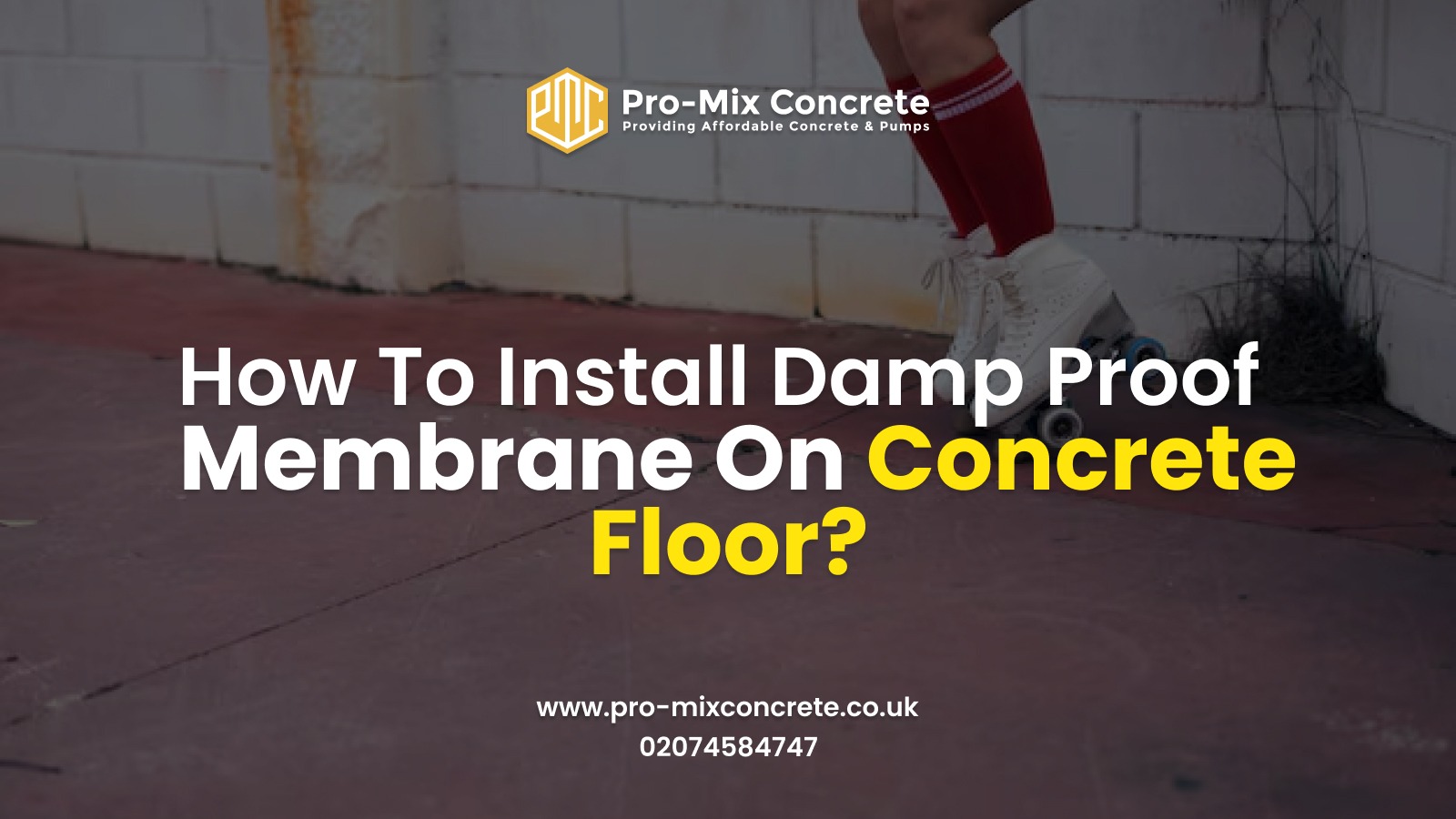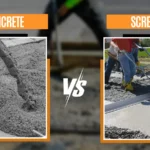Water seeping through concrete floor slabs is a common problem due to the absorbent nature of concrete. Managing moisture in such situations can be challenging, particularly when it infiltrates the top finishing layer of your floors. The presence of excess moisture poses significant threats to carpets and floor coverings, especially in cases where a damp-proof floor membrane on concrete is either absent or has failed before the floor installation.
Read more: How To Insulate Concrete Floor?
How to Apply Damp Proof Membrane on Concrete Floors
Step 1: Prepare the Concrete Surface
Make sure the concrete floor is clean, dry, and free from dust, debris, and loose materials. Clean the surface thoroughly to ensure good adhesion of the DPM. If the concrete floor is uneven, level it with a self-levelling compound for a smooth surface.
Step 2: Measure and Cut the Membrane
Measure the room dimensions to determine the required amount of damp-proof membrane. Add extra inches for overlaps and adjustments. Roll out the floor membrane on concrete on a flat, clean surface, and use a measuring tape and utility knife or scissors to cut it to size.
Step 3: Primer
Depending on the DPM type, apply a layer of primer on the cleaned and levelled concrete surface. The primer enhances DPM adhesion. Follow the manufacturer’s instructions on the primer label and allow it to dry completely before moving to the next step.
Step 4: Laying it Out
Carefully unroll the membrane over the concrete floor so it covers the entire surface. If using multiple rolls, overlap the edges by a few inches to create a watertight seal. Use the jointing tape to secure seams if joining two sheets. This way you guarantee a tight and proper sealing.
Step 5: Secure the Membrane
Temporarily secure the edges and corners with heavy objects or adhesive to prevent movement during the final flooring installation.
Step 6: Trim Excess Membrane
Trim any excess membrane along the room edges for a neat finish.
Step 7: Install Final Flooring
Once the floor membrane on concrete is laid and secured, proceed to install the final flooring material (laminate, engineered wood, carpet, tiles) following the manufacturer’s instructions.
Step 8: Inspect and Seal Gaps
After installing the final flooring, inspect the entire area for gaps or openings. Seal any gaps or joints with appropriate sealants or adhesives to maintain damp-proofing integrity.
Read more: How To Seal Concrete Floor?
Using Liquid Epoxy DPM on Existing Concrete Floors
Liquid Epoxy Damp Proof Membrane (DPM) serves as a remedial solution for cases where an existing DPM has failed or was never installed. This epoxy DPM comprises a two-component system and is characterised by its low odour, solvent-free nature, and effectiveness in addressing constant low levels of moisture in concrete floors.
Read more: How To Stop Moisture Coming Through Concrete Floor
Several advantages come with the application of a liquid epoxy DPM:
Application and Impermeable Layer
The epoxy liquid membrane is directly applied to the floor, creating an impermeable layer that retains water within the concrete slab. This stands in contrast to plastic DPMs that rest above the concrete slab and may permit water passage to the concrete surface. The latter scenario becomes problematic when surface water moves to the DPM edges and subsequently transfers to floor coverings, skirting boards, and wall finishes.
Visual Impact and Decorative Finish
In situations involving existing concrete floors in factories, commercial spaces, and offices, epoxy floor coatings serve dual purposes. Apart from acting as a DPM, they contribute to the visual impact with a high-shine finish and a variety of colours, enabling those seeking a decorative finish to achieve their desired aesthetic.
Application to Damp Floors
Epoxy membranes can be directly applied to damp floors, eliminating the need to remove the old concrete floor screed. This is a process known for its expense, messiness, and time-consuming nature. Additionally, there is no requirement to wait for the floor to dry before installing the damp-proof layer, resulting in time savings.
Read more: How To Lay Vinyl Flooring On Concrete?
The Takeaway
To make sure your project is foolproof, contact professionals like Ready Mix Concrete London. We’re just a call away.
Concrete Floor Damp Proofing FAQs:
Do I need a DPM under laminate flooring?
Yes, it is necessary. To prevent dampness from rising through the concrete floor and causing problems, a Damp Proof Membrane (DPM) should be used under all final floor types, including wood flooring, laminate, vinyl, and floor tiles.
What’s the difference between a DPC and a DPM?
A Damp Proof Course (DPC) is a horizontal barrier inserted into the wall to prevent moisture from rising through the structure via capillary action. On the other hand, a Damp Proof Membrane (DPM) is a plastic sheet placed between a concrete slab or floor screed to prevent moisture and contaminants from entering a property from the ground.
Does a DPM go above or below floor insulation?
Insulation should be laid above the DPM. This is done to safeguard both the concrete above and the insulation itself from potential moisture damage. Placing insulation under the DPM could lead to degradation of the insulation over time due to moisture exposure.
Author
- Dennis Broderick
- Dennis Broderick is the founder and owner of Pro-Mix Concrete Company, a trusted name in ready-mix concrete solutions across the UK. With over 20 years of hands-on experience in the construction and concrete industry, Dennis brings unmatched expertise, practical insights, and a commitment to quality on every project - from residential driveways to large-scale commercial developments.
Latest entries
BlogJuly 15, 2025Why Same-Day Concrete Delivery is Vital for Small Builders in London?
BlogJuly 10, 2025Concrete vs. Screed: Which is Best for Your Project?
BlogJuly 5, 20255 Mistakes to Avoid When Ordering Ready Mix Concrete in London
BlogJune 27, 2025How Same-Day Concrete Delivery Works in the UK?




